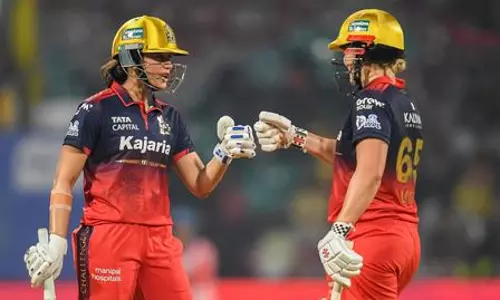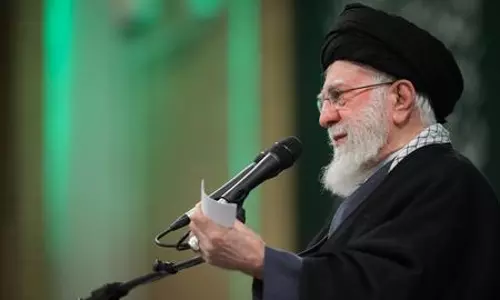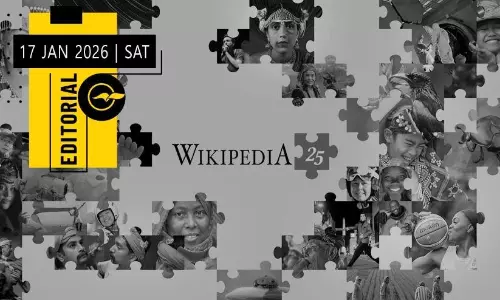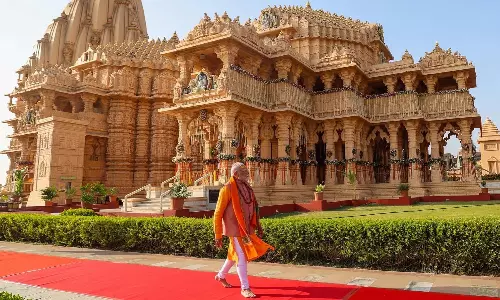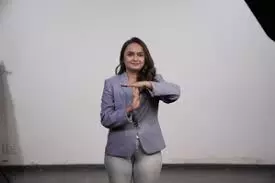
Sign language commentary delights deaf cricket fans in India
text_fieldsNew Delhi: The introduction of sign language commentary in the T20 World Cup has emerged as a groundbreaking development for deaf cricket fans in India. For the first time, the deaf community can fully immerse themselves in the excitement and intricacies of the game, thanks to interpreters who bring the action to life through animated expressions and precise hand gestures.
When Jasprit Bumrah castled Muhammad Rizwan on the first ball of the 15th over in the India-Pakistan clash of the 2024 T20 World Cup, it brought the crowd at the Nassau County International Cricket Stadium in New York back to life.
Across households in India, a feeling of jubilation spread as Bumrah's dismissal proved to be a turning point in the game, favoring their side. How did India's deaf community perceive the feeling of joy when Bumrah dismissed Rizwan?
Positioned at the bottom right-hand corner of television and digital screens in India, a female sign language interpreter swiftly communicated the happiness around the dismissal in the game through her animated expressions and precise hand gestures.
The inclusion of sign language interpretation in the Hindi commentary feeds on Star Sports 3 and Disney+ Hotstar for India's matches is the outcome of a partnership established from IPL 2024 between the broadcasters and India Signing Hands, a Mumbai-based organization dedicated to addressing accessibility challenges for the deaf community in India.
"It was such a close match, like everybody thought India was going to lose. Then at the last moment, the situation became so strong in the match that everybody was hooked to their screen. Even deaf people really enjoyed the sign language translation because of those strong emotions and the strong words that the commentators were using. So it became a very gripping match," says Mansi Shah, a sign language interpreter, in a telephonic conversation with IANS.
According to estimates provided by the World Health Organisation (WHO) in 2023, India is home to a deaf community of approximately 63 million individuals. Hence, it makes sign language interpretation crucial for effective communication and comprehension between deaf individuals and those with normal hearing.
Mansi confidently acknowledges sign language as her native tongue with no hesitation. Mansi, a certified interpreter, naturally communicates through sign language due to being raised by deaf parents. She states how sign language interpretation is providing a feeling of belonging to deaf cricket viewers in India.
"To have something like this happen is actually very monumental because this is being done for the first time in the world and in India, we know how big cricket is. Plus, deaf people have always loved cricket, and just like any other fans, they are crazy about it.
"Then, for them to see that 'oh, I'm having sign language to see in the match'. That feeling to just sit and watch the match along with their hearing counterparts, and be included in the game, has been amazing," she adds.
Mansi remembers how deaf people had a limited viewing experience of cricket matches without sign language. "They could only see the score, wickets and whatever graphics would be on the screen. But now with ISL interpretation, they are able to learn so many facts shared by the commentators, like there are so many jokes that are cracked during the match.
"Now they're actually able to feel that vibe – like when you hear the commentary, you feel a certain way, right? That commentary being interpreted by the interpreter on the screen has actually really changed the whole accessibility game to watch cricket in India, because deaf people can now watch and understand the happenings in a game. It's become so much more accessible to them and they are now feeling more inclusive."
To prepare for the Men's T20 World Cup, Mansi and other sign language interpreters like Priya Sundaram, Shivoy Sharma, Kinjal Shah, and Namra Shah, teamed up with sign language experts to devise signs for cricket-related terminology and establish signage representations for certain cricketers.
To increase precision, several deaf cricketers joined the team and provided valuable feedback on sign language interpretation for the tournament. Interpreters use hand gestures to show the direction of a shot, the trajectory of a delivery, and extras conceded.
If a ball or shot is an absolute peach in a dire situation, it is conveyed via the perfect sign, where the thumb and index finger are in a circle, with the other fingers straight or relaxed away from the palm. "Just like Hindi, Marathi or English, every language has its own grammar, which encapsulates the emotions. So, when you want to express yourself, you use grammar, and words in the language to express yourself.
"Similarly, in sign language, if you want to express your emotions or you want to express something, you do it through the grammar, which is a facial expression, or via body movement, and the shapes of your hands. All of this is the sign language grammar through which the interpreter can expresses themselves.
"In a game, it is a very exciting moment where the catch is taken, and you can see that expression on the interpreter's face as well. So that is how deaf people are able to connect with what is being said, because the facial expressions hold huge importance for deaf listeners.
"Hearing people can hear and listen, but deaf people cannot hear. So they consume through their visual sense, which is their eyesight. For them, it's all about their eyes, which is why sign language is called a visual language," elaborates Mansi.
The deaf community has received an abundance of cricketing wisdom in the past few months, which has left them with a profound sense of importance, which they never experienced before.
"Earlier, what would happen is they would sit with their families to watch, but they would ask, 'Oh, what happened? Can you tell me what did he say?' Then their relative would explain, but it would be very brief and it made them feel neglected."
"They always felt, 'Oh, I'm not satisfied. I want to know more about what happened'. But they had no option, and had to just keep quiet. Now they can independently watch it; they don't need to depend on anyone. So that independence is kind of empowering a community to learn and dream."
"If tomorrow, just by looking at this interpretation, so many young deaf children dream about, 'Oh, I want to become a cricketer', it would mean that this is opening up more avenues for them. We hope that this is not the end. All of us in the entire community want to do even more for them," adds Mansi.
Mansi's voice fills with delight as she reveals her parents' sheer happiness in watching matches being communicated through sign language, and of their new-found eagerness to seek similar interpretations of other visual mediums.
"Previously, it never mattered to them – Hindi or English broadcast, because they could not hear it. But now to see sign language interpretation there, it was such a moment of pride, like they said, 'Okay, our language is being given to you on broadcast after so long.' So they are very, very overwhelmed, and are now just demanding, 'Give me this movie or series in sign language'.
"So the demands have gone through the roof. We're all ready to give them anything and everything in sign language. I do really hope that the sign language movement translates to other sports in the country as well.
"The thing is that now just open the floodgates, and why not? Everything can be done and it's not like, 'Oh, this or that cannot be done'. Just like hearing people are sitting and consuming content, the same can be done in sign language. So again, the whole world's an oyster when it comes to that now," she said.
Source: IANS






